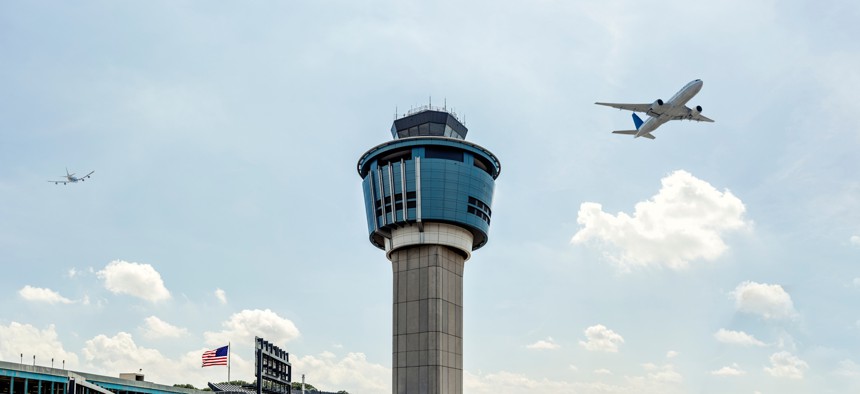How Agencies Can Modernize Without Disruption
To better serve citizens, agencies must work to implement new technologies while at the same time improving security and operational reliability.
Presented by
Verizon

Today, modernization is top-of-mind for government agencies everywhere. Over the past several years, with both internal and external motivators, such as the Modernizing Technology Government Act, agencies across the federal government have had to devise strategies for the secure implementation of new communications tools and networks, without breaching citizen safety and benefits.
“When you think about modernization and the pace at which technology is changing, there are two things that are true: First, the rate of change is faster today than it’s ever been before but, secondly, and equally as true, is it will never be this slow again. The beauty of that is it’s encouraging more and more interactions between public and private sector,” said Martin Kessler, the Chief Information Security Officer at Verizon Business Group, in a recent interview. Kessler emphasizes greater urgency for the private sector to provide more secure and elevated tools suitable to meet government needs, provide business continuity and improve citizen services.
System and IT modernization hold great value for agencies, especially those focused on delivering citizen services. But as agencies modernize with the aim to improve citizen services across the board, they must also seek to ensure that safety and citizens’ access to resources aren’t jeopardized or minimized in the process.
“Modernization without disruption is essential,” says Verizon’s Kessler, noting that as the federal government’s largest communications provider, Verizon has sought to continuously introduce new and emerging technology.
“Right now, we are modernizing in a number of different ways,” says Kessler. “We’re replacing copper with fiber. We’re migrating millions of circuits from TDM to IP. We’re introducing new technologies into the marketplace like 5G. We’re also implementing edge computing in order to take advantage of the speed and reliability of that 5G service. All of these initiatives allow us to provide better and more modern services.”
5G, in particular, can offer huge benefits to agencies that deliver citizen-facing services, such as the Federal Aviation Administration as it strives to improve its ability to deliver and act on real-time information across the aviation landscape.
“The blink of a human eye is 400 milliseconds but the speed and latency of a 5G network is actually just a few milliseconds,” says Kessler. “So, when you think about cloud computing at the edge, plus the speed of the 5G network, plus real-time situational awareness from a number of forecast systems, the air traffic controllers on the runway will have absolutely real-time information that can allow them to do their job better and ultimately deliver better services to the citizen.”
Kessler is careful to note that while many people may be wary of emerging technologies, many of those technologies, such as artificial intelligence and analytics, aren’t as young as they seem. In fact, Verizon has been piloting and using them for years.
“We’ve been using cognitive analytics and artificial intelligence to automatically detect and repair incidents in the digital environment before they cause disruption to our customers.” he says. “We’ve been able to prevent countless incidents where availability would’ve been interrupted.”
Emerging Tech Bolsters Secure Modernization for Agencies
Protecting and defending information within a secure network, especially in times of modernization when organizations are potentially more vulnerable to data breaches, remains a priority at the forefront for government stakeholders. For Verizon, this means adopting tools with security enhancements built in, not bolted on.
“Cybersecurity must be at the forefront of that so we can both capitalize on the benefits of these emerging technologies but also implement them such that we effectively manage the risk along the way,” says Kessler. “As a managed critical infrastructure integrator, our customers depend on us for mission critical services no matter what’s going on in the world. So, our services have to be available, resilient, and secure because lives depend on them. We take that very seriously.”
It’s imperative to build in “security plans from the outset,” Kessler says of the elements of cybersecurity that he sees as imperative across networks. For example, 5G includes additional encryption and authentication. “This allows agencies to improve their cybersecurity posture as a part of their modernization efforts. The reality today is that no matter how mature an agency’s cyber plan is, there will be events and incidents. The key for agencies is to be sure they can operate through an attack.”
Verizon’s use of emerging technologies allows them to stay on top of the ever-evolving cyber threat landscape.
“We have to constantly defend our own networks as well as our customers from cyberattacks. We do that by ingesting massive amounts of data in real-time, which allows us to understand what ‘normal’ looks like on our own networks and therefore more easily detect anomalies compared to that baseline normal,” he notes.
By continuing to leverage technologies like 5G, AI, edge computing and more, enhanced and secure networks have the opportunity to deliver new benefits to agencies and the citizens that rely on their services without disruption.
“When you think about our federal agencies and the missions they perform, whether it’s energy or defending the homeland or communications or transportation, [emerging technologies] are going to benefit agencies, which directly translates to benefits for our citizens,” says Kessler, noting that modernization doesn’t end here. “This is just the beginning. The opportunities to improve missions are limited only by our imaginations.”







